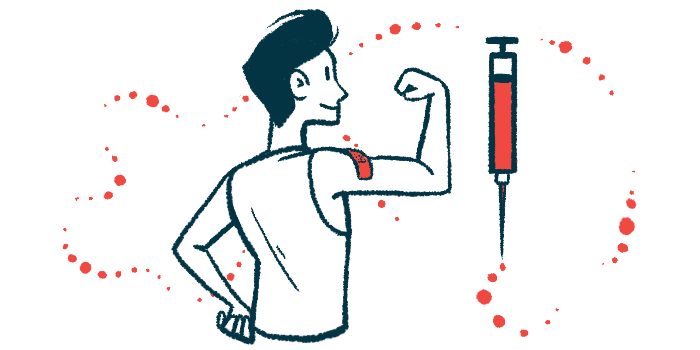Use of Haegarda Reduces Swelling Attack Rate, Rescue Medication Use

Long-term preventive (prophylactic) treatment with Haegarda is safe, decreases how often swelling attacks occur in patients with hereditary angioedema (HAE), and how often they rely on rescue medications to treat swelling attacks.
These findings come from an open-label extension study (NCT02316353) of the Phase 3 COMPACT trial (NCT01912456) that followed patients for up to 2.7 years.
Researchers also observed that half of those who used Haegarda for longer than a year remained free of any swelling attacks during that time.
“Long-term prophylaxis offers the possibility of a relatively normal life as an attainable goal for many patients,” the researchers wrote.
The study, “Prophylactic therapy with subcutaneous C1-inhibitor is associated with sustained symptom control in patients with hereditary angioedema,” was published in Allergy and Asthma Proceedings.
HAE patients carry genetic mutations that lead to the lack of functional C1 inhibitor, a protein in the blood that helps control an inflammatory response.
A deficiency in C1 inhibitor increases fluid leakage from blood vessels into nearby tissues. This results in sudden and frequent swelling attacks that can occur anywhere in the body, such as the face, throat, airways, arms, and legs, as often as every week. These attacks can also cause discomfort and pain.
Haegarda, marketed by CSL Behring, works by supplying the missing C1 inhibitor. It’s approved in the U.S. for patients ages 6 and older, given at a dose of 60 IU/kg twice a week through a subcutaneous (under-the-skin) injection.
Initial data from the open-label extension study showed that treatment with the approved dose or a lower dose of 40 IU/kg for a mean of 1.5 years was safe and helped prevent swelling attacks, allowing patients to become free of symptoms.
Researchers have now extended the analysis to U.S.-based patients who were eligible to continue receiving the same treatment dose for up to almost three years.
To see how well Haegarda was capable of lowering swelling attack frequency, researchers focused specifically on data from patients who received the approved 60 IU/kg dose.
A total of 63 HAE patients with a median age of 41 years were treated with Haegarda’s approved 60 IU/kg dose. They had a median of nine swelling attacks in the three months before joining the study.
After up to 2.7 years of treatment, the number of swelling attacks decreased by more than half in 58 (92%) of the patients, and 31 (49%) experienced less than one swelling attack a year.
Similar findings were obtained when researchers looked at 24 U.S. patients who had received treatment for longer than a year. Of these, 12 (50%) remained free of any swelling attacks during that time.
During the open-label extension study, a total of 371 swelling attacks were reported. Of these, 229 (62%) were treated with on-demand (rescue) medication. Most (192; 84%) were resolved with one dose of rescue medication, but 25 attacks (11%) required two doses, and 12 (5%) required three or more doses.
Most swelling attacks were treated with intravenous (into-the-vein) plasma-derived C1 inhibitor or Firazyr (icatibant). Some were treated with Kalbitor (ecallantide).
A total of 39 (62%) patients did not rely on rescue medication at any time, and among those who did, about two-thirds used it less than once a year. The number of patients who required rescue medications decreased over time. During the second year of treatment, 75% of patients required no rescue medication, while 87% required none of these medicines thereafter.
“The use of rescue medication was low, with two-thirds of the patients requiring no rescue medication,” the researchers wrote.
Consistent with previous safety data, the most common side effects were cold, infections, and headache, and reactions at the site of injection were frequent.
Preventive treatment with Haegarda “provided sustained reductions in attack frequency and decreased rescue medication use, with a substantial proportion of patients being attack free,” the researchers wrote.
These findings suggest a shift “from on-demand treatment toward an expanded adoption of long-term prophylaxis,” they wrote.







